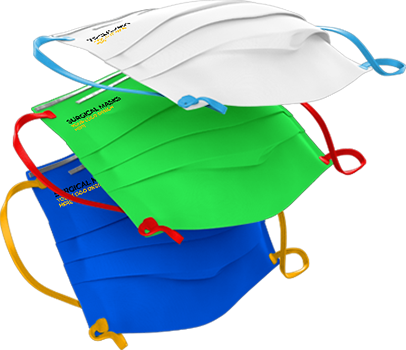No products in the cart.
Coccidia and Giardia in Dogs: Symptoms and Treatment
Coccidia and giardia in dogs are two common intestinal parasites that can affect a dog’s digestive system. Although they share some symptoms, they are different types of infections that require distinct treatments. This article will explore the differences, symptoms, causes, and treatments for coccidia and giardia in dogs.
Coccidia and Giardia in Dogs
🔍 Understanding the Differences Between Coccidia and Giardia in Dogs
Both coccidia and giardia are protozoan parasites that affect the intestines of dogs, but they differ in how they cause infections:
- Coccidia are microscopic parasites that invade the cells of the intestinal lining, causing inflammation and damage.
- Giardia, on the other hand, is a flagellate protozoan that attaches to the intestinal walls, disrupting nutrient absorption and causing diarrhea.
🍽️ How Both Infections Affect a Dog’s Digestive Health
Both coccidia and giardia cause significant gastrointestinal distress. Coccidia causes intestinal cell damage, leading to inflammation, severe diarrhea, and potential blood in the stool. Giardia causes malabsorption of nutrients, leading to watery diarrhea and sometimes bloating, but without the same level of intestinal cell damage as coccidia.
Giardia and Coccidia in Dogs Symptoms
🤒 Common Symptoms of Both Coccidia and Giardia in Dogs
Both coccidia and giardia produce similar symptoms in dogs:
- Watery diarrhea is the hallmark sign.
- Vomiting and loss of appetite.
- Weight loss and dehydration due to fluid loss.
However, there are differences in how the symptoms present:
- Giardia often causes frothy diarrhea with a foul smell.
- Coccidia may lead to bloody diarrhea and mucus in the stool.
🔍 How to Differentiate Between Giardia and Coccidia Symptoms in Dogs
It can be difficult to differentiate between giardia and coccidia based on symptoms alone, as both cause diarrhea. However, a few distinguishing factors are:
- Giardia typically causes frothy diarrhea, while coccidia leads to bloody stool.
- Giardia often causes watery stool without mucus, whereas coccidia may produce stools with mucus and blood.
A fecal test is the best way to confirm which parasite is causing the infection.
Giardia and Coccidia Infections in Dogs
⚠️ The Risk Factors and Causes of Simultaneous Coccidia and Giardia Infections
It’s possible for a dog to have both coccidia and giardia infections at the same time, especially in high-risk environments like shelters or kennels. Risk factors include:
- Puppies: More susceptible due to weaker immune systems.
- Poor hygiene: Contaminated water and food are common transmission routes.
- Multi-dog environments: Dogs interacting in group settings can easily spread infections.
💥 How Giardia and Coccidia Interact in the Dog’s Digestive System
While giardia and coccidia affect different parts of the intestines, their simultaneous presence can worsen the symptoms. Giardia causes malabsorption of nutrients, while coccidia damages the intestinal cells, leading to more severe diarrhea, dehydration, and nutrient deficiencies.
Giardia and Coccidia in Dogs Treatment
💊 Treatment Options for Both Giardia and Coccidia in Dogs
The treatment for giardia and coccidia involves different medications:
- Giardia is treated with metronidazole or fenbendazole.
- Coccidia is treated with sulfadimethoxine or toltrazuril.
In cases of simultaneous infection, a combination of treatments may be required.
🩺 Common Medications Used to Treat Giardia and Coccidia Simultaneously
When dogs are infected with both giardia and coccidia, veterinarians may use a combination of the following:
- Metronidazole: Commonly used to treat giardia.
- Sulfadimethoxine: A common treatment for coccidia.
- Fenbendazole: May also be used for both parasites in some cases.
Your veterinarian will determine the best course of treatment based on the severity of the infection.
How to Treat Giardia and Coccidia in Dogs
📝 A Step-by-Step Guide to Treating Giardia and Coccidia in Dogs
Treating giardia and coccidia simultaneously typically involves the following steps:
- Veterinary Diagnosis: Your vet will confirm the presence of both parasites through a fecal exam.
- Prescription Medications: The appropriate medications will be prescribed to treat both infections.
- Hydration and Diet: Provide your dog with fluids to prevent dehydration and a bland diet to help ease their digestion.
- Hygiene: Thoroughly clean your dog’s living area to prevent reinfection.
🥗 Managing Diet, Medications, and Hygiene During Treatment
During treatment, it is essential to:
- Provide a bland diet (e.g., boiled chicken and rice) to reduce intestinal stress.
- Administer medications as prescribed, ensuring the full course is completed.
- Maintain hygiene: Regularly clean your dog’s bedding, food bowls, and the areas where they go to the bathroom to prevent re-infection.
Conclusion
Coccidia and giardia in dogs are two intestinal parasites that can cause significant digestive distress. By understanding the differences between the two, recognizing their symptoms, and knowing how to treat them effectively, you can help your dog recover quickly. If your dog shows signs of diarrhea, vomiting, or weight loss, it’s crucial to consult your veterinarian for a proper diagnosis and treatment plan. With prompt care, most dogs can recover fully from giardia and coccidia infections.
FAQs:
What are the symptoms of coccidia and giardia in dogs?
Both parasites cause diarrhea, vomiting, and weight loss. Giardia causes frothy diarrhea, while coccidia leads to bloody stools.
How do you treat coccidia and giardia in dogs?
Giardia is treated with metronidazole or fenbendazole, while coccidia is treated with sulfadimethoxine or toltrazuril.
Can a dog have both coccidia and giardia at the same time?
Yes, it’s possible for a dog to be infected with both coccidia and giardia, especially in environments with poor sanitation.
How can I tell the difference between coccidia and giardia in my dog?
A fecal exam is necessary to differentiate between giardia and coccidia. Symptoms like frothy diarrhea point to giardia, while bloody stool is more likely caused by coccidia.
Next Steps:
For more information on treating giardia and coccidia in dogs, visit our article on Treatment Options for Giardia and Coccidia.


